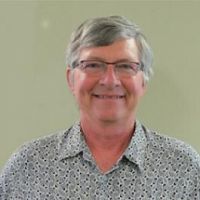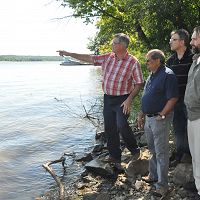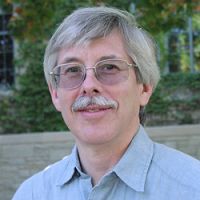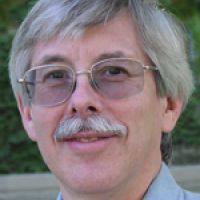IML-CZO Investigator Profiles: Neal Blair (Northwestern University)
While urban and rural areas are seemingly polar opposites the two different areas depend greatly on one another, according to IML-CZO investigator and Northwestern University professor Dr. Neal Blair.
“Rural agricultural landscapes are responsible for much of the food that makes it to urban areas. The bioethanol that we used for transportation is also produced from the same land,” said Dr. Blair. “If we don’t manage the agricultural landscapes in a sustainable fashion, and especially in the face of increasing demand and climate change, the high population areas will be significantly stressed. Research in the IML-CZO should better inform our management.”
Northwestern University is located in Evanston, Illinois – a northern suburb of Chicago – in a state where agriculture is a major industry in the rural areas. Illinois led the nation in soybean production (by bushel) in 2014 and was second behind Iowa in corn production (by bushel) that same year.
Dr. Blair – who has joint appointments in Civil & Environmental Engineering and Earth & Planetary Sciences at Northwestern – focuses on the role of the carbon cycle on agricultural land specifically and the Critical Zone – where terrestrial life meets its requirements – air, water and soil.
“When we speak of the C-cycle, we are typically referring to the conversion of atmospheric carbon dioxide – or CO2 – to organic matter in plants and soils and then back to CO2. The C-cycle is an essential component of the Critical Zone. For instance, soil organic matter acts as a glue between soil particles causing them to aggregate. This makes erosion more difficult.”
Part of Dr. Blair’s research focus is to prevent agricultural land degradation such as what occurred on the American Great Plains during the first half of the twentieth century, an event that came to be known as The Dust Bowl.
“The Dust Bowl of the 1930’s was caused by a combination of extreme drought and the loss of soil organic matter via excessive tillage. We have consequently developed conservation methods to maintain the necessary C-storage in soils,” he said.
Dr. Blair studied chemistry as an undergraduate at the University of Maryland and then went to Stanford to earn a PhD in Organic Chemistry. Different parts of the country face different environmental challenges, particularly in regard to water management.
“One of the major differences between the Midwest and the West coast, and especially California, is water management. The low relief of the Midwest has forced us to build extra drainage into the landscape so that water does not pool. As a result water is rapidly exported along with a significant portion of applied fertilizers. Ultimately the nutrients are delivered to the Gulf of Mexico by the Mississippi River where they cause hypoxic (dead) zones.”
As of August 2015, the Gulf of Mexico “dead zone” was the size of Connecticut and Rhode Island combined, or more than 5,000 square miles. Excessive nutrient pollution in the water lowers oxygen levels which has devastated fish and marine wildlife and in turn affected the economy of the region. However, the West Coast faces a different set of challenges.
“An overabundance of water has not been a problem for much of California agriculture. The high relief in some areas, such as in the Eel River CZO, coupled with land use drives rapid soil and bedrock erosion rates. Land sliding can be a major problem in some areas.”
The effects of climate change only exacerbate the issues that Dr. Blair and his colleagues study. Part of his goal with the IML-CZO is to study these phenomena so he and can other researchers can better understand these issues and educate the public about them.
“Climate change in the form of increased temperatures, more frequent drought and/or more extreme precipitation events will likely impact the Critical Zone C-cycle in ways we do not fully understand. An important objective of the IML-CZO research is to better understand how the Midwestern agricultural ecosystems will respond to these future perturbations.”
By Nick Fetty (Journalism, University of Iowa)
This is part of a series of articles featuring investigators involved in the IML-CZO project.
Related News

IML-CZO Investigator Profiles: Art Bettis (University of Iowa)
26 Feb 2016 - Iowa poet laureate Mary Swander once said that the Hawkeye State has “the most altered landscape in the United States.” This...

Midwest researchers come together for research project
05 Feb 2016 - Nick Fetty | July 30, 2015 Roughly 30 students, professors, and researchers from six different institutions met in Muscatine this week to discuss...

Iowa City Press-Citizen: Conference focuses on watershed, farmland management
05 Feb 2016 - Nick Fetty, For the Press-Citizen 7:27 p.m. CDT July 30, 2015 MUSCATINE – In both sports and academics, universities often compete with...

On the Radio: Big Ten schools team up in Iowa for the environment
05 Feb 2016 - August 17, 2015 | Nick Fetty This week’s On the Radio segment looks at a partnership between Big Ten schools to improve farmland and...
Explore Further





